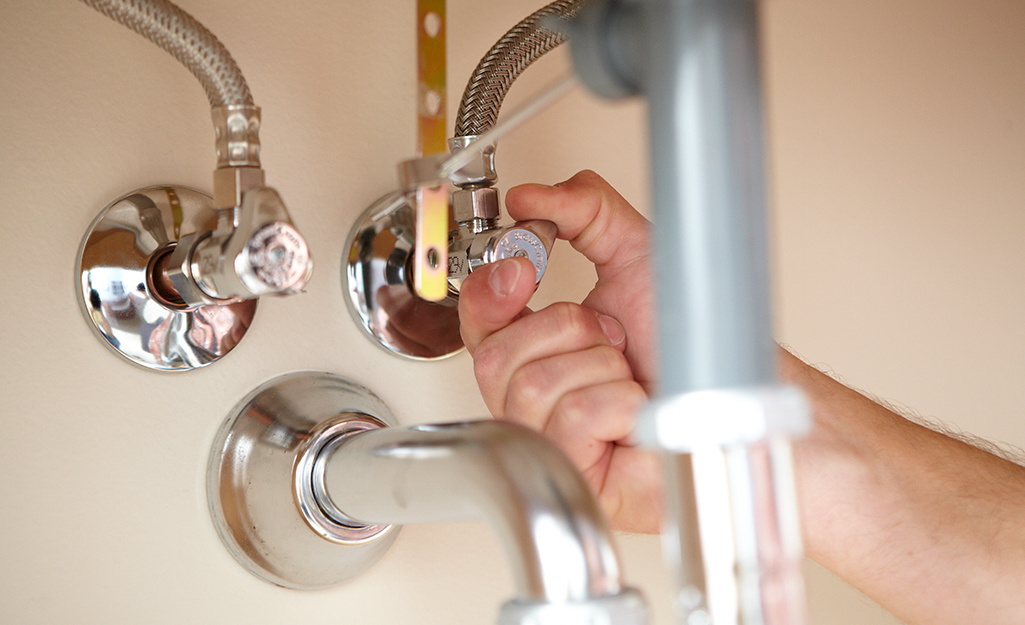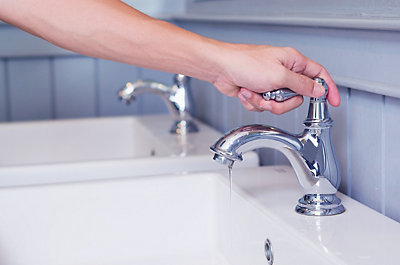Your Significance of Resolving a Malfunctioning Faucet
Your Significance of Resolving a Malfunctioning Faucet
Blog Article
The article below in relation to Water Dripping from Faucet: Why and How to Fix is highly entertaining. You should check this stuff out.

Leaking faucets may feel like a small trouble, however their impact goes beyond simply the nuisance of the audio. From drainage to incurring unneeded monetary costs and wellness dangers, neglecting a dripping tap can cause various effects. In this short article, we'll look into why it's critical to address this usual home concern quickly and properly.
Wastage of Water
Ecological Impact
Leaking taps contribute substantially to water wastefulness. According to the Environmental Protection Agency (EPA), a single faucet leaking at one drip per second can throw away greater than 3,000 gallons of water per year. This not just stress water sources however also influences environments and wildlife depending on them.
Step-by-Step Guide to Dealing With a Dripping Tap
Tools Called for
Before trying to fix a trickling faucet, collect the required devices, including an adjustable wrench, screwdrivers, replacement components (such as washers or cartridges), and plumber's tape.
Typical Tap Issues and Their Solutions
Recognize the type of faucet and the details concern causing the drip. Common problems include damaged washing machines, corroded valve seats, or faulty O-rings. Refer to manufacturer directions or on the internet tutorials for step-by-step guidance on repairs.
Financial Prices
Boosted Water Bills
Past the ecological impact, dripping taps can inflate water expenses considerably. The accumulated waste gradually converts right into higher utility expenditures, which can have been prevented with timely repair work.
Potential Home Damages
Moreover, extended dripping can bring about harm to components and surface areas bordering the faucet. Water buildup can trigger staining, rust, and even structural concerns if left neglected, leading to added repair service expenses.
Health and wellness Issues
Mold and Mold Development
The continuous presence of dampness from a leaking faucet creates an ideal setting for mold and mildew development. These fungis not only compromise indoor air quality but also posture health and wellness risks, specifically for people with breathing conditions or allergic reactions.
Waterborne Illness
Stationary water in leaking taps can become a breeding ground for microorganisms and various other pathogens, enhancing the threat of waterborne conditions. Contaminants such as Legionella bacteria flourish in stagnant water, potentially resulting in major health problems when consumed or breathed in.
Do it yourself vs. Expert Repair service
Advantages and disadvantages of Do It Yourself Repair
While some might attempt to fix a leaking tap themselves, do it yourself fixings feature their very own set of challenges. Without proper expertise and devices, DIY efforts can aggravate the problem or lead to insufficient repair work, prolonging the trouble.
Benefits of Working With an Expert Plumber
Hiring a specialist plumber ensures that the underlying source of the dripping tap is addressed successfully. Plumbings have the expertise and devices to identify and fix tap issues effectively, conserving time and decreasing the risk of further damage.
Environmental Obligation
Specific Contribution to Preservation
Taking responsibility for repairing leaking faucets aligns with wider initiatives towards water preservation and ecological sustainability. Every person's activities jointly make a substantial impact on preserving precious sources.
Lasting Living Practices
By focusing on timely repair work and adopting water-saving habits, people contribute to lasting living methods that benefit both existing and future generations.
Safety nets
Regular Upkeep Tips
To stop leaking taps, execute routine upkeep such as cleaning up aerators, inspecting for leakages, and replacing worn-out components quickly. In addition, consider mounting water-saving devices or upgrading to extra efficient fixtures.
Importance of Prompt Fixes
Addressing dripping faucets as quickly as they're seen prevents further water waste and prospective damages, inevitably conserving both water and cash in the future.
Influence On Residential Property Worth
Perception of Well-Maintained Residential Property
Preserving a building in good condition, consisting of dealing with upkeep concerns like trickling faucets, boosts its perceived worth and charm among possible purchasers or lessees.
Impact on Resale Value
Properties with well-kept plumbing components, consisting of faucets, command higher resale worths in the real estate market. Attending to trickling faucets can contribute to a favorable impact during home inspections and settlements.
Final thought
Resolving a trickling tap goes beyond simple comfort; it's a necessary step toward saving water, minimizing monetary costs, and securing health and building. Whether through DIY repair services or professional aid, taking action to fix dripping faucets is a little yet impactful method to promote accountable stewardship of resources and contribute to a healthier, much more sustainable future.
How to Fix a Dripping or Leaky Faucet
A leaking faucet is one of the most common problems that homeowners encounter, but it being commonplace doesn’t make it any less annoying. The constant drip drip drip of a leaking bathtub faucet, showerhead, or sink tap can disturb your home’s serenity. Left neglected, a dripping faucet can also result in higher water bills and discoloration or mold growth in your sink or plumbing fixtures.
Fortunately, you don’t have to be a trained plumber to know how to stop a dripping faucet. With some basic tools, replacement parts, and a little patience, leaky faucet repair is a breeze. In this article, we’ll explain what causes dripping faucets and how you can fix them.
What Causes a Leaking Faucet?
Kitchen and bathroom faucets come in all manner of designs, but most involve some combination of valves, O-rings, seals, and washers. The O-ring is usually the weakest link, but any one of these pieces can wear down over time. Heat, moisture, temperature fluctuations, minerals, mold, and movement can contribute to warping and corrosion, breaking the watertight seal. This just comes with the territory of being a homeowner. Everything is always subject to wear and tear, and some component parts of your appliances and fixtures need to be replaced on occasion. At least replacement O-rings are cheap!
More rarely, dripping faucets can be a symptom of excessively high water pressure. Were this the case in your home, you would probably notice that the leak is not isolated to one faucet. Water pressure issues are harder to resolve on your own. We recommend contacting a professional plumber if you suspect your water pressure is too high.
How to Fix a Dripping Faucet
Pipe wrench or monkey wrench Allen wrench set Screwdrivers Old towel or rag Shut off the water.
Before you do anything, you need to turn off the water to keep from drenching your kitchen or bathroom. You should find a valve under the sink and against the wall. Once you’ve turned this valve, try turning the faucet on to confirm that the water source has been cut off.
If you can’t locate your local valve for the faucet you’re working on, you can always shut off the water to the house at the main valve. Of course, this will prohibit anyone from using the sinks, showers, or toilets while you’re working on the faucet that’s giving you trouble.
Plug or block the drain.
You’ll be disassembling the faucet and removing some small bits of hardware. Plug the drain with a stopper or rag to avoid the possibility of a small screw falling into your P-trap.
Take apart the faucet assembly.
There are several varieties of kitchen and bathroom faucets, each with its own manner of assembly. For detailed instructions on how to disassemble your faucet, you can refer to the fixture’s manual or contact the manufacturer. If you know whether you have a ball, disc, cartridge, or compression faucet, you can find detailed schematics online.
In general, you need to begin by removing the faucet handles. You might notice a small screw that you’ll need to remove with a screwdriver or Allen wrench. If you don’t see any visible securing hardware, it’s likely hidden under a decorative cap that can be unscrewed or popped off with flathead screwdriver.
Remove each piece methodically, consulting a schematic when necessary. Take notes or arrange the pieces in such a way to make it easier to correctly reassemble the faucet later.
Remove the cartridge.
Once you’ve removed the handles and securing hardware, you should be able to remove the valve cartridge or stem. Some cartridges will slide right out. Other faucet models will require you to loosen a nut with a pipe wrench before you can remove the valve stem.
Examine the exposed hardware.
With the cartridge or stem removed, inspect the component parts. Check the rubber O-rings for wear and tear. Also examine the seat washer for corrosion or other damage. These pieces are usually the responsible parties for a dripping faucet, but it’s worth inspecting the other component parts while you have the faucet disassembled.
Find replacement parts.
Once you’ve identified which faucet component has failed, find an identical replacement. Your local hardware store should have O-rings, seat washers, and other standard components in stock. If you have a luxury or uncommon faucet, you may have to contact the manufacturer for a replacement part.
It’s a good idea to take your old parts with you to the hardware store so you can compare them with the store’s inventory and be sure you’re purchasing the correct replacement.
Reassemble the faucet.
With your new parts in hand, reconstruct the faucet and handles. Don’t be tempted to overtighten screws or nuts. You might think this could create a better seal, but it can instead damage or bend a delicate part of the assembly and create a new problem for you.
Turn on the water and test the faucet.
The only thing left to do is test your work. Unplug the sink, turn the water back on, and try the faucet. Congratulate yourself on a job well done!
https://www.libertyhomeguard.com/how-to-fix-a-dripping-or-leaky-faucet/

As a fervent reader on How to Fix a Dripping or Leaky Faucet , I thought sharing that section was a great idea. Loved our review? Please share it. Let another person locate it. Thank you so much for your time invested reading it.
Report this page